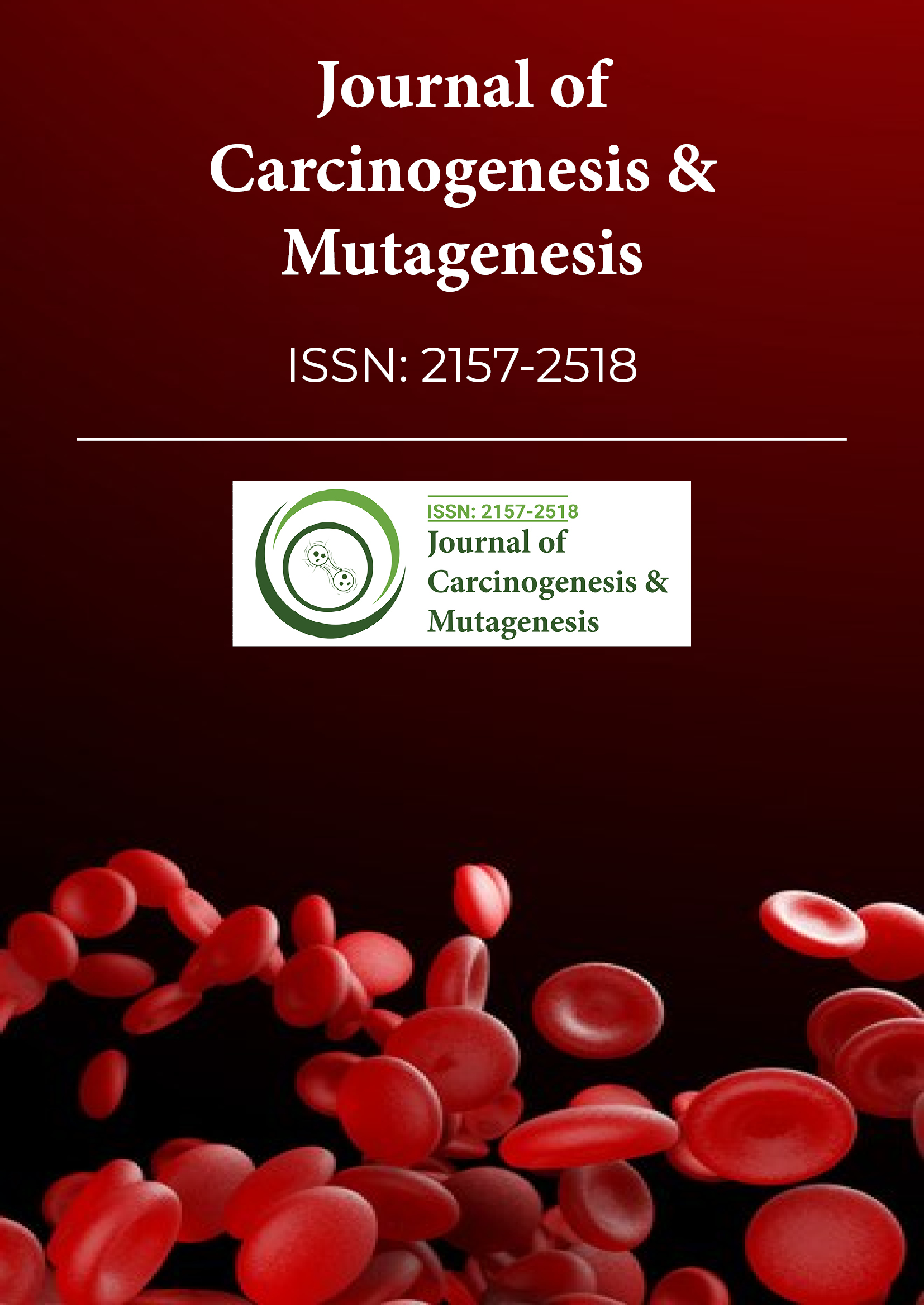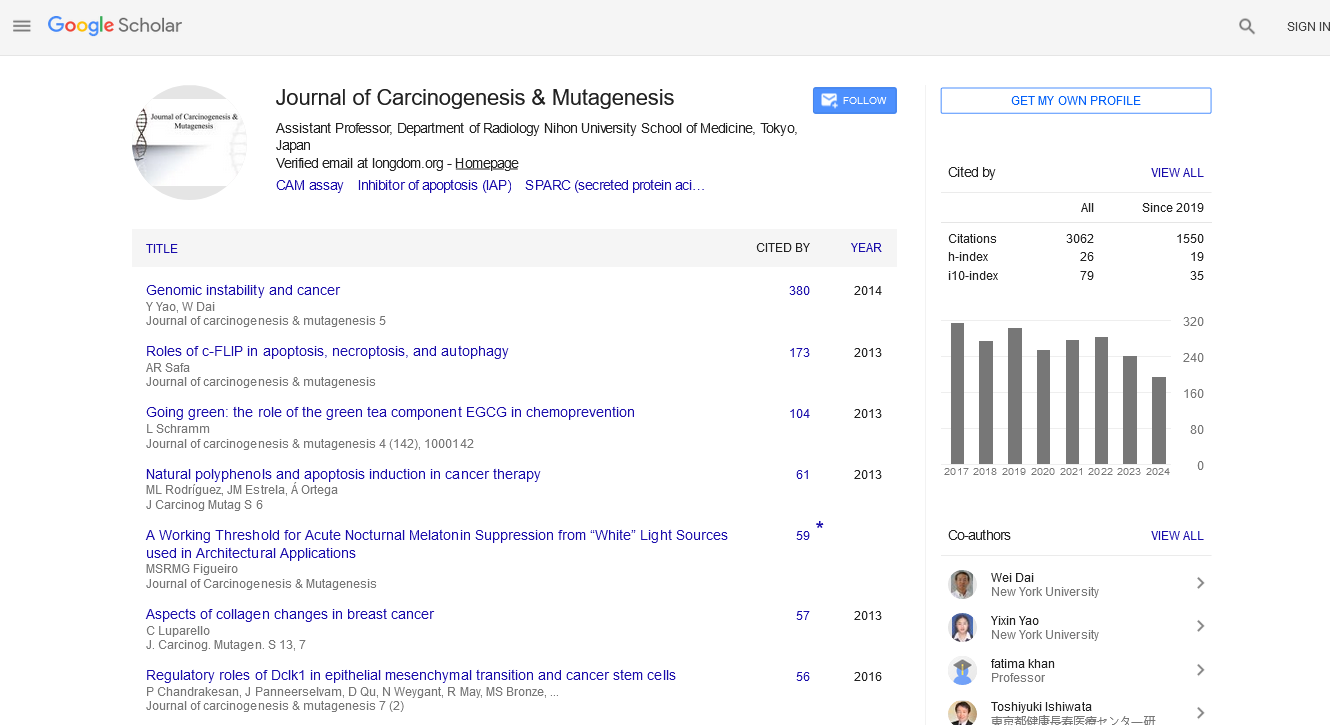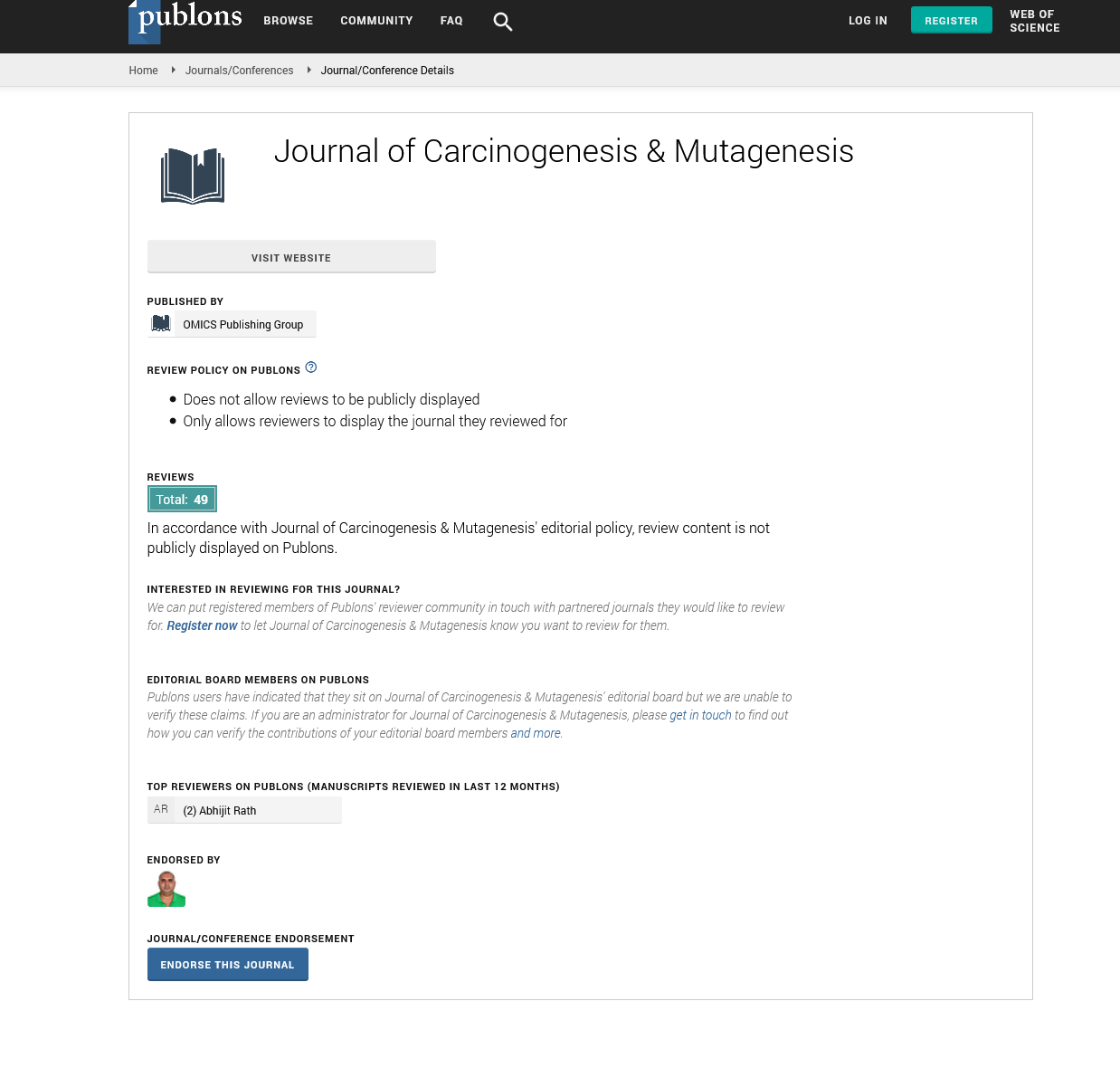Indexed In
- Open J Gate
- Genamics JournalSeek
- JournalTOCs
- Ulrich's Periodicals Directory
- RefSeek
- Hamdard University
- EBSCO A-Z
- OCLC- WorldCat
- Publons
- Geneva Foundation for Medical Education and Research
- Euro Pub
- Google Scholar
Useful Links
Share This Page
Journal Flyer

Open Access Journals
- Agri and Aquaculture
- Biochemistry
- Bioinformatics & Systems Biology
- Business & Management
- Chemistry
- Clinical Sciences
- Engineering
- Food & Nutrition
- General Science
- Genetics & Molecular Biology
- Immunology & Microbiology
- Medical Sciences
- Neuroscience & Psychology
- Nursing & Health Care
- Pharmaceutical Sciences
Commentary - (2024) Volume 15, Issue 6
The Role of Genetics and Epigenetics in Cholangiocarcinoma
Wirulda Pootakham*Received: 30-Oct-2024, Manuscript No. JCM-24-27764; Editor assigned: 01-Nov-2024, Pre QC No. JCM-24-27764 (PQ); Reviewed: 15-Nov-2024, QC No. JCM-24-27764; Revised: 22-Nov-2024, Manuscript No. JCM-24-27764 (R); Published: 29-Nov-2024, DOI: 10.35248/2157-2518.2.15.462
Introduction
Cholangiocarcinoma, also known as bile duct cancer, is a rare but highly aggressive malignancy that arises from the epithelial cells of the bile ducts. These ducts are integral components of the biliary system, responsible for transporting bile from the liver to the gallbladder and small intestine. Cholangiocarcinoma is often categorized into intrahepatic, perihilar and distal types, depending on the tumor’s location within the biliary tree. Despite advancements in medicine, the prognosis for cholangiocarcinoma remains poor, primarily due to late diagnosis and limited therapeutic options.
Cholangiocarcinoma is relatively uncommon, accounting for about 3% of all gastrointestinal cancers. Its incidence varies geographically, with higher rates observed in Southeast Asia, largely attributed to endemic liver fluke infections. Risk factors include primary sclerosing cholangitis, chronic liver disease, biliary stone disease, hepatitis B and C infections and exposure to certain toxins such as thorotrast. Emerging research also suggests a genetic predisposition in some cases.
The development of cholangiocarcinoma involves chronic inflammation and subsequent genetic and epigenetic alterations. Persistent inflammation, as seen in primary sclerosing cholangitis or liver fluke infections, leads to bile duct epithelial injury, dysplasia and eventually malignancy. Mutations in key oncogenes and tumor suppressor genes, such as KRAS, TP53 and IDH1/2, are commonly implicated in the tumorigenesis of cholangiocarcinoma.
Patients with cholangiocarcinoma often present with non-specific symptoms, contributing to delayed diagnosis. Common symptoms include jaundice, abdominal pain, weight loss, pruritus and dark urine. In advanced cases, hepatomegaly, ascites, or palpable masses may be noted. Laboratory findings frequently reveal elevated bilirubin levels, abnormal liver function tests and elevated tumor markers such as CA 19-9 and CEA.
The diagnostic workup for cholangiocarcinoma involves a combination of imaging studies, histopathology and biomarker analysis. Imaging modalities such as ultrasound, Computed Tomography (CT) and Magnetic Resonance Cholangio pancreatography (MRCP) play a critical role in identifying the tumor’s location and extent. Endoscopic Retrograde Cholangiopancreatography (ERCP) is often used for both diagnostic and therapeutic purposes, including biopsy and stent placement. A definitive diagnosis requires histopathological confirmation.
The treatment of cholangiocarcinoma is challenging and depends on the tumor’s stage and location. Surgical resection offers the only potential cure but is feasible in only a minority of patients due to late-stage presentation. For perihilar and distal tumors, bile duct resection with lymphadenectomy is the standard approach, while intrahepatic cholangiocarcinoma may require liver resection. Liver transplantation is an option for select cases with localized disease.
For unrespectable or metastatic cholangiocarcinoma, systemic chemotherapy, often based on gemcitabine and cisplatin, is the mainstay of treatment. Targeted therapies and immunotherapy are emerging as promising options, particularly for tumors with actionable genetic alterations. Palliative care, including biliary drainage and symptom management, is important for improving quality of life in advanced cases.
The prognosis for cholangiocarcinoma remains poor, with a fiveyear survival rate of less than 10% for advanced disease. Early diagnosis and treatment are key to improving outcomes. Advances in molecular profiling have opened new methods for targeted therapies, offering hope for personalized treatment strategies. Ongoing research into biomarkers for early detection and novel therapeutic agents holds promise for altering the course of this challenging disease.
Conclusion
Cholangiocarcinoma is a formidable cancer with significant diagnostic and therapeutic challenges. A multidisciplinary approach involving hepatologists, oncologists and surgeons is essential for optimal management. Continued research and innovation are imperative to improve survival rates and enhance the quality of life for affected patients.
Citation: Pootakham W (2024). The Role of Genetics and Epigenetics in Cholangiocarcinoma. J Carcinog Mutagen. 15:462.
Copyright: © 2024 Pootakham W. This is an open-access article distributed under the terms of the Creative Commons Attribution License, which permits unrestricted use, distribution, and reproduction in any medium, provided the original author and source are credited.


